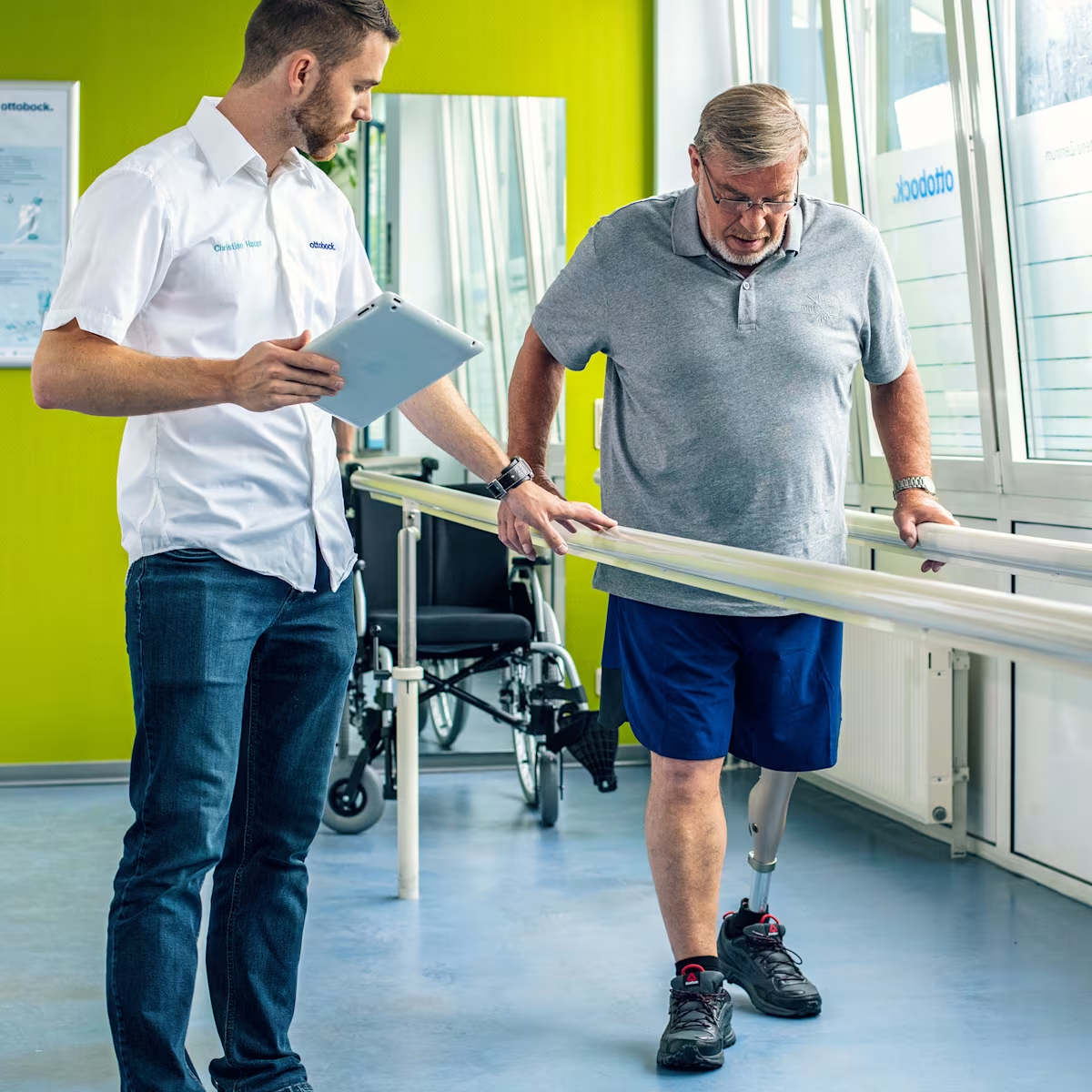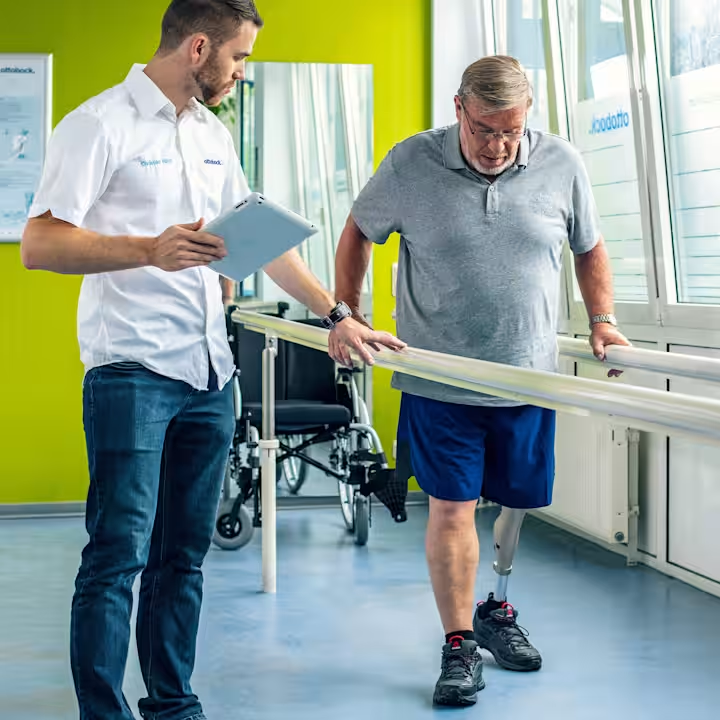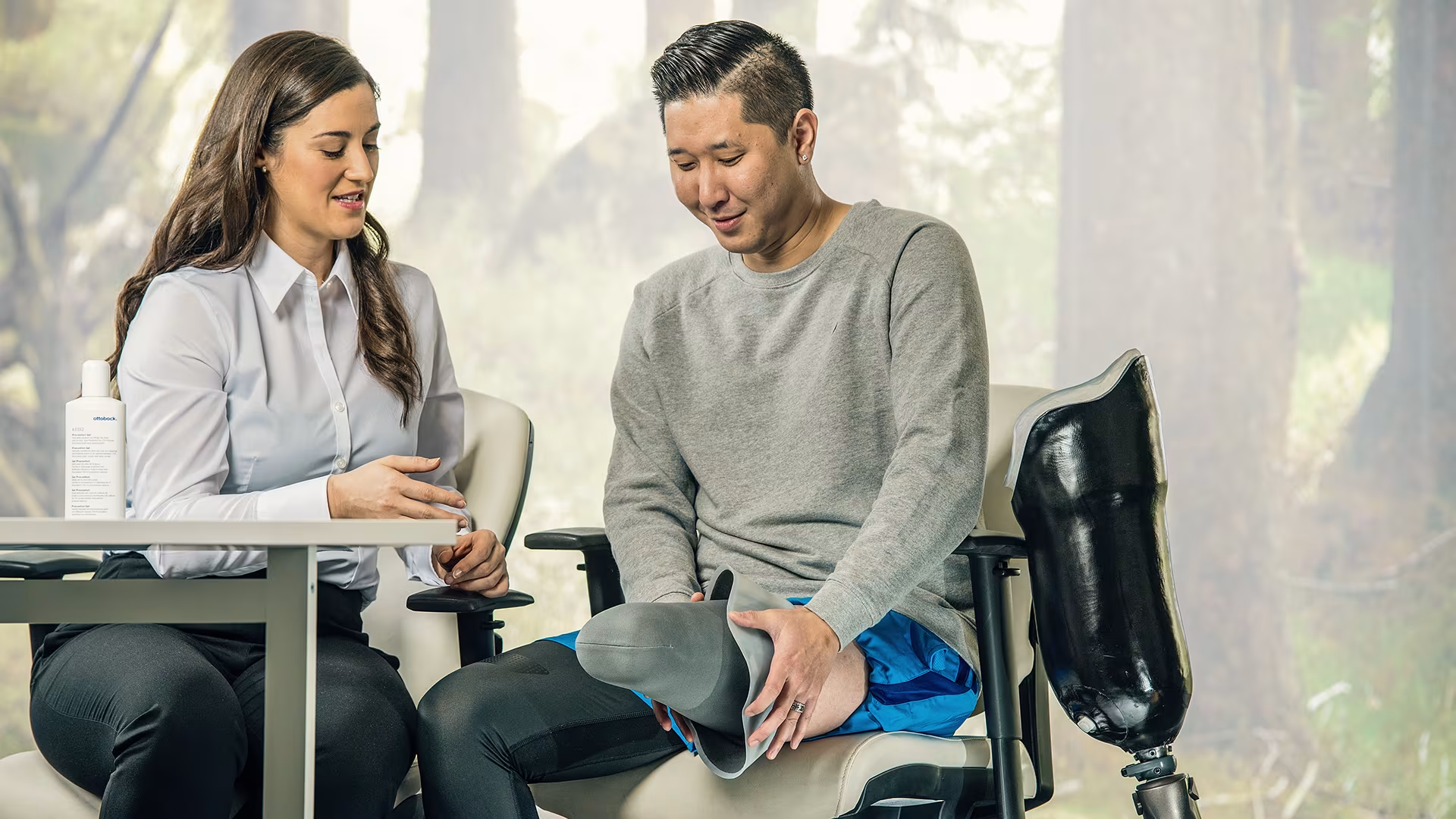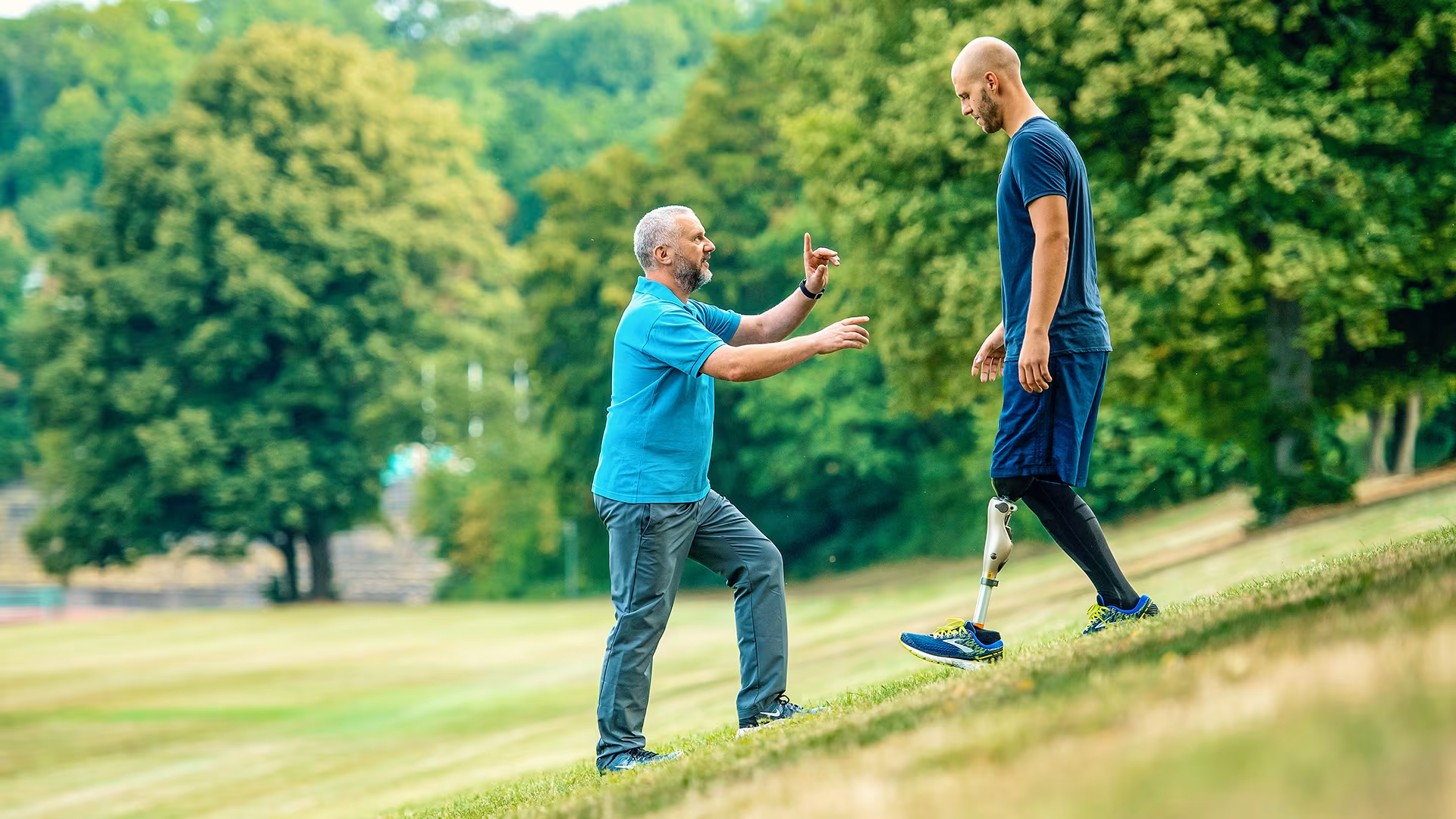


Prosthesis and gait training
Educate your patients on getting familiar with their prosthesis and guiding them through gait training.
Educate your patients on getting familiar with their prosthesis and guiding them through gait training.
Training with a prosthesis
While your patient is getting used to their first prosthesis, much of your focus should be on helping them learn the basic skills they need for day-to-day life with lower limb loss. For example:
Donning and doffing their new prosthesis
Handling and cleaning their device
Balance, coordination, and strength-building
Activities of daily living (ADLs)
And of course, gait training
If the patient has a caregiver, it’s important to involve them throughout the recovery, fitting, and training process. They may assist the patient with their prosthesis at first, but the ultimate goal is for the patient to learn how to control and maintain their device themself.
Donning & doffing a prosthesis
One of the first skills new prosthetic users need to learn is how to put on and take off their prosthesis. There are multiple ways to do this, depending on the type of prosthesis your patient is using and the condition of their residual limb. The following videos show two common techniques, one for a TT user and one for a TF user.
One-way valve system + knee sleeve
Watch how a below-knee amputee dons a prosthesis designed with a common socket and liner combination.
Watch how a below-knee amputee dons a prosthesis designed with a common socket and liner combination.
Pin liner shuttle lock system
Watch how an above-knee amputee dons a prosthesis with a more complex but user-friendly socket configuration.
Watch how an above-knee amputee dons a prosthesis with a more complex but user-friendly socket configuration.
Gait training
Once a patient has been fitted with a new prosthesis for the first time, you’ll want to start a gait training programme tailored to the components selected for their new prosthetic solution.
When your patient is getting used to a new prosthesis, it’s essential for them to learn how to trust their new leg. Focus on helping them regain their balance and build their confidence: start by explaining the functionality of the new prosthesis and the everyday motion sequences it supports, especially the prosthetic foot for TT users and prosthetic knee for TF users.
Since the gait cycle is approximately 60% stance phase and 40% swing phase, stance phase is often the best place to begin when training new users. Many may struggle with a new asymmetry in their gait: a noticeably shorter stance phase for their affected leg. To help them overcome that challenge, focus both on controlling stance phase initiation and understanding how the device will swing once it begins to move.
Here are some exercises that can help your patient build both their strength and their confidence in their prosthesis:
Balance and weight-shifting: Help your patient get comfortable with their new prosthesis by starting with simple back-and-forth movements from their sound side to their affected side.
Overall strengthening exercises: Focus on the user’s torso and affected leg, but also on achieving a balanced full-body posture when standing and walking.
Standing up & sitting down: Help your patient master these seemingly simple movements by showing them how to consistently balance the load on both their sound and affected side.
Stance phase training: Have your patient practice putting an even load on both their sound and affected side during the start of every step.
Activities of daily living (ADLs): Spend lots of time on your patient’s most common activities.
Watch on Ottobock YouTube
The playlist Kenevo Gait Training for Professionals shows exercises in different Ottobock Kenevo A, B and C modes.
Assessing your patient’s progress
For most lower limb amputees, a successful rehab process is one that returns them to their everyday life and work.
For a physical therapist or prosthetist, evaluating a patient’s progress towards that goal requires a good understanding of the patient’s mobility both pre- and post-amputation. Before-and-after comparisons are still one of the most effective ways to document effective rehabilitation - for patients themselves, for your clinic, and especially for payers.
Below you’ll find a collection of instruments that are frequently used to assess and measure multiple dimensions of your patient's progress during therapy:
Three validated, standardised, performance-based tests can be used to assess both current mobility levels and improvement after therapy and training. Each of these tests can be used with all mobility grades, with little equipment, and in a short amount of time.
Three patient-reported outcome (PRO) questionnaires that can be used to gather patients’ own perceptions of their progress. While PROs often involve subjective ratings of patients’ symptoms, behaviors, or wellbeing, these tools can still provide valuable diagnostic information for clinicians.
Advance your skills with Ottobock
Are you looking to maximise the outcomes you can achieve with Ottobock products? Complete the form below to connect and schedule a training session with our Prosthetic Academy Clinicians.
Your benefits:
Connect with a global expert community
On and offline trainings and certifications
Content designed for physiotherapists
More back to mobility topics

Pre-amputation preparation
A step-by-step guide on what to consider and how to prepare your patients and their relatives for a planned amputation.
A step-by-step guide on what to consider and how to prepare your patients and their relatives for a planned amputation.

Post-amputation recovery
Take the right steps to set your patients up for successful rehabilitation back to mobility.
Take the right steps to set your patients up for successful rehabilitation back to mobility.

Prosthetic fitting
Prepare your patients for their first prosthetic fitting and restoring their mobility. Plus learn more about the components of a prosthetic leg.
Prepare your patients for their first prosthetic fitting and restoring their mobility. Plus learn more about the components of a prosthetic leg.

Back to life and refitting
Supporting your patients to resume their daily activities with their prosthetic leg.
Supporting your patients to resume their daily activities with their prosthetic leg.